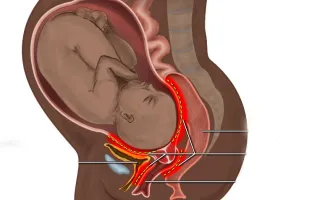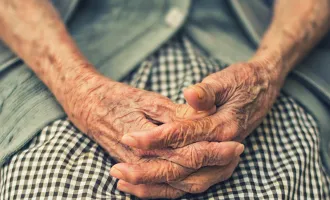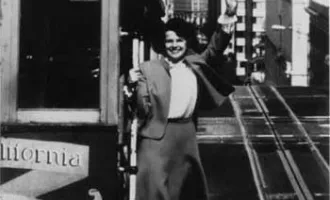This Date in UCSF History: Equal Medical Rights for Women
Originally published in Synapse - The UCSF student newspaper May 5, 1976.
Women representing women’s clinics and health organizations throughout California testified at a recent legislative hearing that women’s medical rights are being ignored. The hearing, held by the State Legislature’s Joint Committee on Legal Equality, was held April 23 in Los Angeles.
The committee was formed in September 1973 to lead the way toward putting the Equal Rights Amendment into effect in California.
Senator Omer L. Rains, Chairperson of the committee, said the hearing was called at the request of women and women’s organizations in the state who expressed concern over the status of medical care for women.
Among the facts that convinced the committee to call the hearing, he said, were statistics which predict that there will be 89,000 cases of breast cancer in the country this year, and that 33,000 of the affected women will die during this period.
These numbers have not diminished in the last five decades, he said.
Other problems which prompted the hearing were the increasing number of working women exposed to birth defect inducing chemicals, and the increasing rate of hysterectomies throughout the nation, he said.
According to Rains, 40 per cent of the American women over the age of 40 will be advised to have hysterectomies, and 12,000 of these women will die as a result of the operation.
Unnecessary Surgery Lynn Walker, testifying on behalf of the Orange County Feminist Health Center, said that of the 690,000 hysterectomies performed last year, only 10 per cent were for cancers of the reproductive system.
Walker said the factor of economic benefit for health care providers contributed to the high number of such operations.
She said that 25 per cent fewer such operations were performed in prepaid health plans than in fee-for-service situations.
Irene Hirano and Valeric Butler of the To Help Everywoman Clinic in Los Angeles pointed to the recently publicized sterilizations of Spanish speaking women without informed consent (USC LA County Medical Center, 1973) to emphasize the special problems of minority women in this area.
They called for the use of bilingual personnel and information forms to help protect minority women’s medical rights.
Walker suggested legislation to ensure that unnecessary surgery docs not continue, including laws designating patients’ advocates who could remain with them while treatment is discussed and consent forms are signed, and providing access to medical records.
Anne Carre and Shirley Bracked of Women for Women, a Los Angeles organization specializing in the problems of breast cancer, added a number of rights that should be enforced for the breast cancer victim.
These included the right to a simple, clear diagnosis; the right to have a breast biopsy separately from a mastectomy, to give a woman a period of self preparation for the breast removal; the right to have a local anesthetic, rather than a general, for the simple biopsy test; and the right to keep the breast if the cancer is already widely metastasized, since the operation would be useless in this case.
Bracket said that the lack of improvement in breast cancer statistics is partially due to the fact that in most cases, lie same procedures are bring followed today as were decides ago.
Minimal Perinatal Care
Marie Reeves of the California Nurses Association testified that access to perinatal care for many women and babies is minimal in the rural and underserved populations in California.
She cited an inadequate public transportation system, a decreased number of primary care physicians, a lack of knowledge or utilization of consumer use of existing resources, a general unwillingness to accept MediCal clients, and a poor referral system for community to health care system and vice versa.
She suggested several possible solutions to the problem, including increased utilization of nurse midwives, third party MediCal payments to nurse practitioners, and health education related to the roles of women with the school system.
Psychoactive Drugs Linda Fidell, Ph.D., Associate Professor of Psychology at California State College at Northridge, testified that 26 million American women use mood-modifying drugs at least once a year, and 6 million use them regularly. Physicians, she said, prescribe these drugs in about 90 per cent of the cases.
Fidell, who is engaged in a research project on the uses of such drugs by women, said that 25 per cent of the drug-users do not benefit from the use of psychoactive drugs.
Unemployment is the critical variable associated with distress among those women for whom the drugs are probably appropriate, she said.
Fidell said that medical school practices, drug advertising and cultural conditioning all combine to produce for the physician an image of women as likely candidates for such drugs.
She noted that physicians write 73 per cent of the prescriptions for these drugs to women, and only 27 per cent of them to men.
She said that most women taking the drugs have a very poorly defined idea of what they are taking and why. Many whom she interviewed did not recall having been warned against mixing barbiturates with alcohol, a potentially fatal combination. Birth Control Mismanagement Marty Fox of the California Nurses Association spoke on the mismanagement of birth control measures.
Fox, who works at the Haight Ashbury Women’s Need Center, said that information retained by clients from doctors in this area ranges from barely adequate to very distorted.
According to Fox, doctors often neglect to give clients essential information concerning birth control methods, the lack of which often results in unwanted pregnancies.
Some clients, she said, are unaware that another form of contraception must be used in changing from a high dose to a low dose birth control pill.
Half of the clients she has worked with have never been shown how to check the springs of their lUD’s, and many have no idea what kind of lUD they are using, she said. In prescribing diaphragms, she said, doctors often tell the client to “read the box insert.”
According to Fox, this do-it-yourself insertion has contributed to the 25 per cent failure rate of these devices. In order to instruct a client how to insert a diaphragm properly, she said, the doctor must coach the client for 10-15 minutes.
Most doctors, she pointed out, do not have that kind of time.
She recommended the extended utilization of nurses and nurse practitioners to help solve these problems.
Abortion Sarah Grusky of the Feminist Women’s Health Center of Los Angeles said that laws have made it difficult to perform abortions and treated the procedure as major surgery, have prevented paramedics from performing early terminations, and have made the fetus more important than the woman involved.
She called for the repeal of all laws controlling the reproductive lives of women. Rape Joan Robbins of the Los Angeles Commission on Assaults on Women testified that rape victims’ rights are often ignored.
In Sacramento, she said, rape victims are accepted at only the county hospital. In San Diego victims showing no outward signs of abuse must be examined by the police surgeon at police headquarters.
The results of this examination are used only for evidence, she said.
Robbins recommended that rape victims be assured an examination in a medical facility; that prior sexual histories not be required of the victim since such histories are often used against the victim in court; that adequate follow through exams be required; that counselor-advocates be available to rape victims in the emergency room; and that rape victims be given fee waivers for their treatment.



